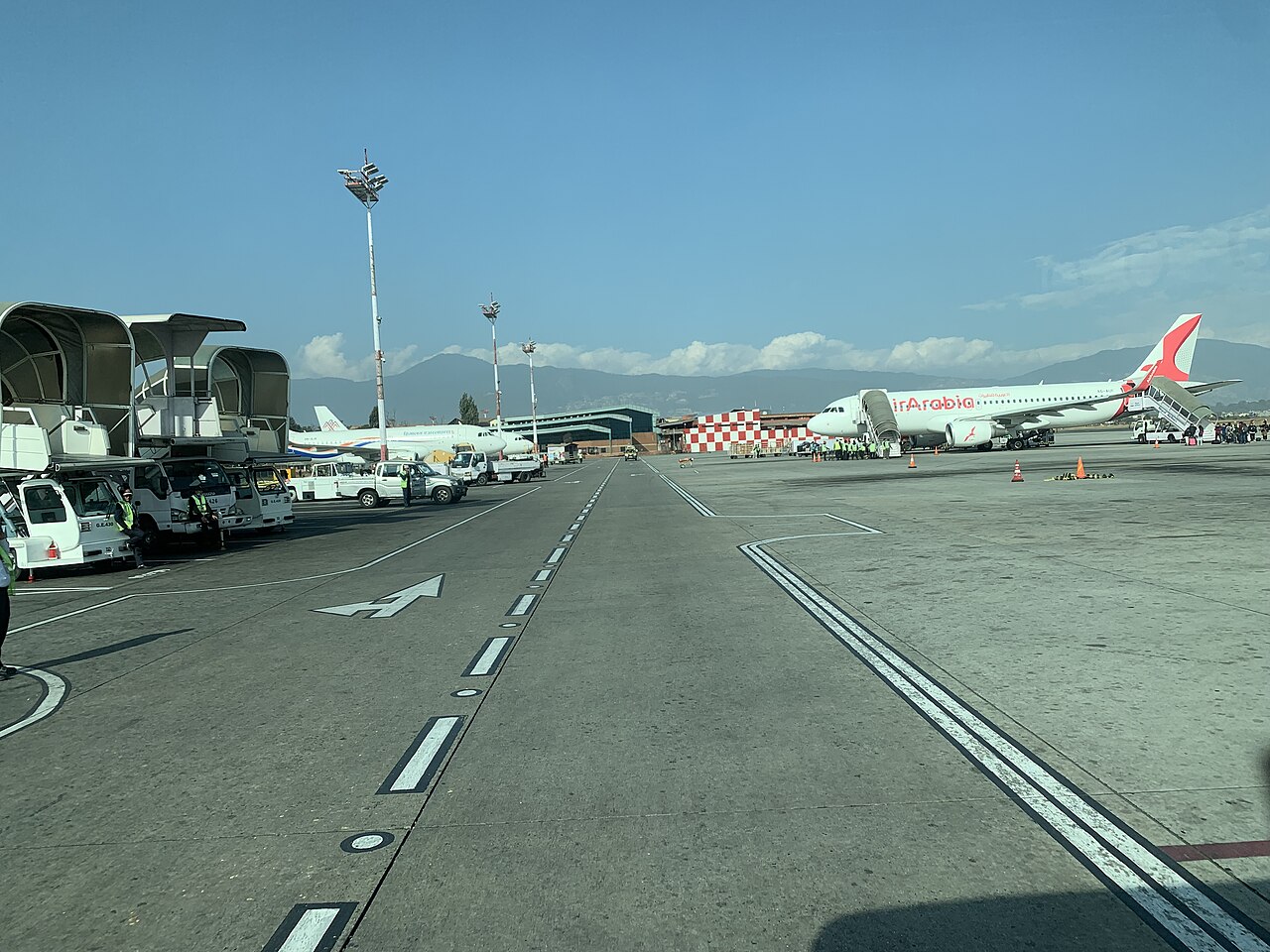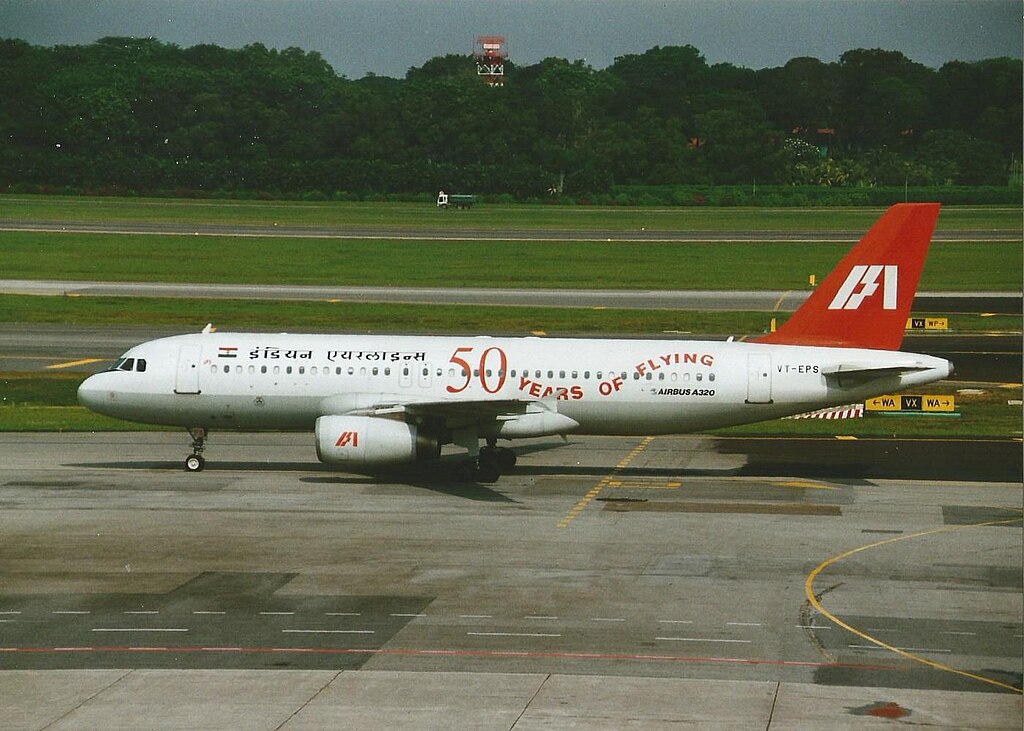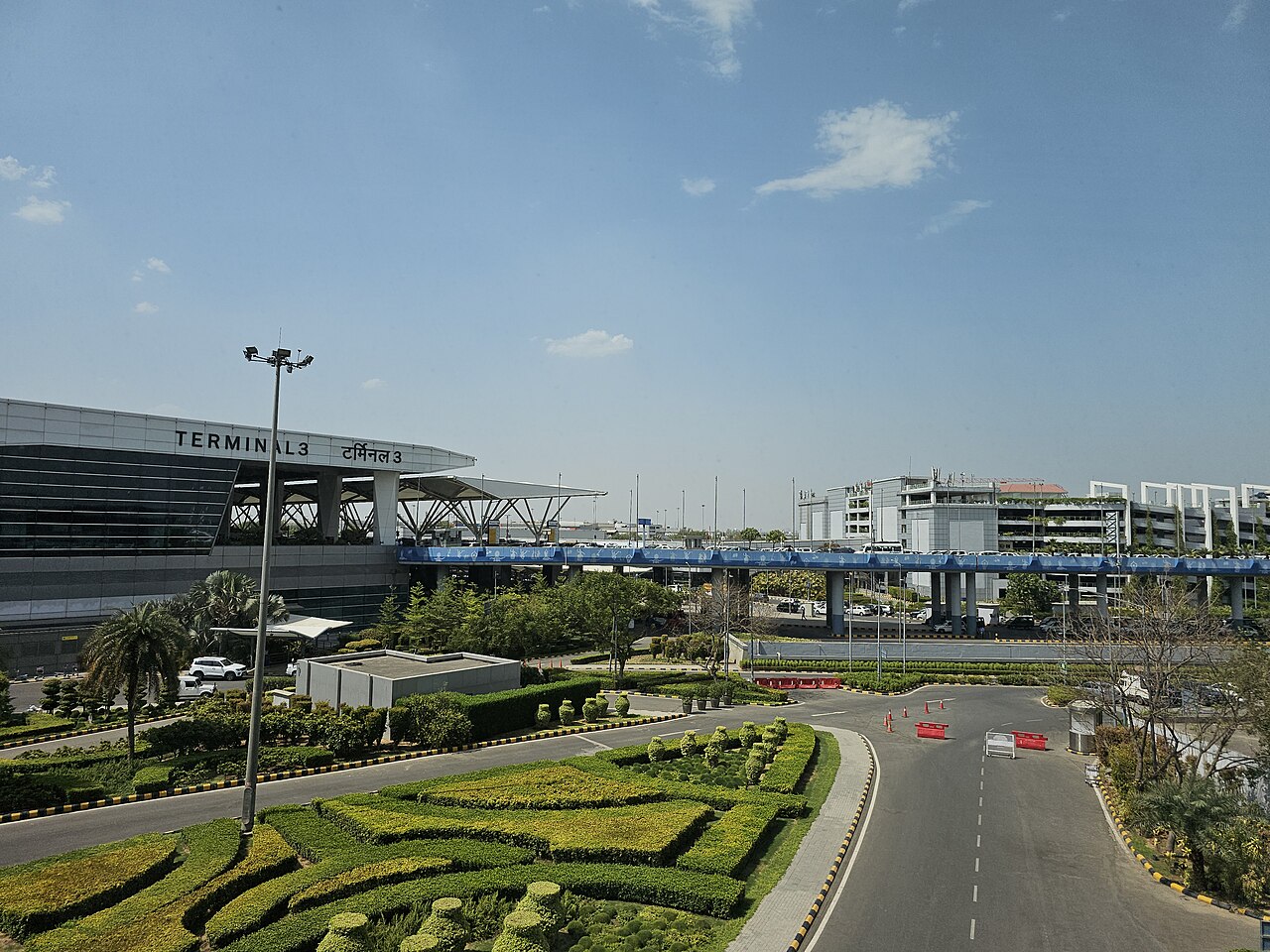
Tribhuvan International Airport – the airport where the highjack began.
Image:Chainwit | Wikimedia Commons
On December 24, 1999, Indian Airlines Flight IC-814, which is immortalized in the aviation of India for all the wrong reasons, departed Tribhuvan International Airport in Kathmandu, Nepal. This flight, which was scheduled to arrive in Delhi, India, in around two hours of time had circuited its way around the skies and the ground for almost almost a week. The skyjacking of this flight with 179 passengers and 11 crew members on board, is considered to be the worst highjacking to have taken place from Nepal. And the worst highjack involving an Indian carrier.
Highjackers demanded the release of a few terrorists (alongside the demands of millions of dollars) and their requests were acceeded to. One of the passengers onboard died, and the highjackers found a safe haven, too. This is the story of one of the most notorious incidents involving Indian aviation and it even led to carriers from India barring themselves from flying to and from Nepal following this incident.
Sketches of how the hijacking began
A little over half an hour after the IC 814 had taken off from Tribhuvan International Airport [take off time: 16:00 Indian Standard Time], it had crossed the Indian airspace. As lunch was being served in mid-air, five armed men (four of whom were masked), rose from their seats, and pushed, shoved, and barged their way into the cockpit, noisomely. The threat was directed at Captain Devi Sharan (who was to later document the whole episode in his book titled “Flight into Fear: The Captain’s Story”), and was instructed to fly west towars Pakistan – the same nation with which India was recently entangled in its Operation Sindoor.
Operation Sindoor and India – Pakistan Airspace Standoff: Who gets hurt more?
However, the attempt to land the aircraft in Pakistan was unsuccessful as Pakistani air traffic control rejected the hijackers’ request to land the highjacked Airbus A300B2-101 [registered as VT-EDW] in Lahore. It might come as a surprise that the then Prime Minister of India, Atal Bihari Vajpayee, and his Principal Secretary, Brajesh Mishra were not notified of the incident even over an hour later after the highjacking.
Captain Sharan asked the ATC officers in India to mediate talks with ATCs in Pakistan to make an environment conducive enough for the landing of IC-814 in Pakistan. Captain Devi relayed the message of the highjackers that if a landing in Pakistan wasn’t set up, the passengers would face the highjackers wrath. India’s High Commission requested Pakistan to allow the flight to land in Lahore but this plea was also rejected.
A quickly dissipating fuel leads to landing in Amritsar
The highjackers allowed the descent of IC-814 to Amritsar Airport as they heeded the advice of Captain Devi Sharan, who told them that the aircraft was low on fuel and needed to land in Amritsar. With the plane now on home soil, Indian commandos and authorities had a golden opportunity to intervene, and take charge of the situation. However, the response that followed turned into a historic failure, with Subhramiam Sway calling the bungled episode in Amritsar airport the “worst capitulation to terrorists in India’s modern history“.
One might argue that Sarabjit Singh (the Director General of Police for Punjab)’s discovery of the hijacking (via television) only one hour before the aircraft landed at Amritsar might have given him too little time for preparation.
IC 814 landed in Amritsar at 19:01 IST and an immediate request for refuel was put into place. The hijackers refused to communicate with local authorities. A Crisis Management Group (CMG) and a local task force ( that aimed to delay the plane) were set up by the Indian government to buy time for a rescue attempt, but this was to no avail. The highjackers didn’t budge from their demand to only talk to officials in Delhi – the capital city of India where all the biggest government decisions in India are made.
Various officials proposed different plans to stop IC-814 from taking off. One was the possibility of carrying commandoes inside the tanker that would refuel the aircraft. [It was hoped that the commandoes would deflate the tyres of the plane]. The other proposal was to put the refueling vehicle in front of the aircraft, and not give IC-814 any space to take off at all. The second notion was agreed to. As the refuel vehicle approached the aircraft, it was directed to go slowly so that it would be as inconspicuous as possible (for the terrorists).
However, the driver of the refuel vehicle misinterpreted the instructions and brought the vehicle at a complete halt. The highjackers felt that they were being conned and coerced Captain Devi to take the aircraft to the skies, despite a lack of fuel. While taking off, IC-814 nearly collided with the refuel vehicle. The vehicle hit the skies at 19:49 IST – the very moment when the commandoes of the National Security Guards (NSG) arrived at the airport. During the take-off Captain Devi Sharan confided to the ATCs, “We are all dying”, and headed to Lahore Airport, which is merely kilometers away from Amritsar Airport.
The Chief of RAW Chief later revealed that among the passengers in the plane was Shashi Bhushan Singh Tomar- the brother-in-law of N K Singh (who was the then Prime Minister Atal Vihari Vajpayee’s Secretary). People also wondered if the plane was allowed to take off from Amritsar to ensure Tomar’s safety.
The Seven-Day Standoff
Much to the chagrin of Captain Devi Sharan, the ATC in Pakistan denied permission to land this plane in Lahore. Again. As a result, all lights (including navigational aids) were turned off at Pakistan’s airport meaning that
even if IC-814 wanted to land, it would be excruciatingly difficult (not to mention bordering the edge of fatal) without lights.
But Captain Sharan was under such an extraordinary amount of pressure from the hijackers that he had to land, irrespective of whether the runway was visible (or not). When Captain Sharan descended the A300 slowly, only to realise that they were about to crash land on a highway. When the captain confided to Pakistan’s ATC that IC-814 would crash land on the highway if not allowed to land at the airport, the ATC agreed to land IC-814 at Lahore.
The plane landed in Lahore at 8:07 PM.
The frustrated highjackers of IC 814 stab a passenger to death in Lahore
Meanwhile, India beseeched Pakistan’s Airport Officials to prevent this plane from taking off again. In order to negotiate with the hijackers, India had even planned to send the Indian High Commissioner in Islamabad, G Parthasarathy. The plane was finally refuelled at Lahore but the lights had been turned off to stall the highjckers plans of taking it to the skies. Pakistani forces tried to negotiate with the hijackers, asking them to release the children and female passengers but the negotiations failed. And miserably at that.
Pakistan was tasked with providing a helicopter to the Indian High Commissioner so that he could reach Lahore for the negotiations as quickly as possible but the helicopter was provided 3 hours late. Hijackers were so much frustrated with the negotiations that they attacked Rupin Katyal, a 25-year-old passenger who was returning from his honeymoon with his wife. Rupin, who hailed from Gurgaon, was to later pass from the wounds of his stabbing. By the time Parthasarathy reached Lahore, he found that the plane had taken off once again.
A rejection beckons in Oman
From Lahore, IC-814 headed to Oman, where permission to land was rejected. IC 814 was to make its next landing at Dubai’s Al Minhad Air Base, where the hijackers finally released 26 passengers after relentless negotiations. A special relief flight of Indian Airlines (which notably included the then Civil Aviation Minister Sharad Yadav) was called to Dubai to take the passengers back to India. Passengers returning from Dubai gave some insights about this hijacked flight:
- Every passenger had been blindfolded, and the men had been segregated from women and children.
- The five hijackers had code names: Chief, Burger, Doctor, Shankar and Bhola.
- (Some) women claimed that the hijackers were decently behaving towards them, and eve showed affection towards the children.
The hijacker with the alias “Burger” has been quoted by passengers to have kept people calm on the flight, whilst also entertaining them by singing, making jokes, and simply by talking to them. However, others have said that highjackers denied passengers the access to food.
After a day, food and water supplies in IC-814 had been depleted. The lavatory,quite understandably, was dire, too. In such a condition, IC-814 took to the skies once again, and headed to Afghanistan, where the ordeal for passengers would finally end. But there was still a lot of time before the passengers would make it to India.
IC-814 landed at Kandahar International Airport on 26th December, at 8 am . After landing, Taliban, which was in power in Afghanistan at the time, offered to mediate between the hijackers and India. However, the fact that India didn’t recognise the Talibani government meant that India had to send an Indian High Commissioner from Islamabad to Kandahar to carry the negotiations forward.
What led the Indian government to be suspicious of the Taliban’s intentions was that Taliban’s members carrying weapons had surrounded IC 814. So, the Indian government was on its toes trying to figure out whether IC-814 had been further strangled by the presence of the Taliban or were the Talibani’s releasing IC-814 from the stranglehold of the terrorists.
The hijackers at Kandahar demanded:
- $200 million
- release of 36 prisoners
- the dead body of Sajjad Afghani, the founder of Harkat-Ul-Mujahideen.
On 26th December, when External Affairs Minister Jaswant Singh, was at a press conference addressing the highjack of IC-814, a mob of people caused disruption and referred to an incident ten years ago when Union Minister Mufti Mohammad Saeed’s daughter Rubiya Saeed was freed after the government released militants.
The disruptors of the press conference were the family members of the people who were highjacked. They wanted to stress the case of the equality of the life of a civilian and that of a government official.
On 27th December, a team of negotiators led by Vivek Katju (the then Joint Secretary of the Ministry of Home Affairs) and Home Ministry’s official Ajit Doval reached Kandahar. Taliban was explicit in not allowing Indian forces to conduct rescue operations at the airport but stressed on their offer to negotiate on behalf of India.
The same day, two incidents in India put a lot of pressure on the Indian government:
- Some relatives of some hostages gatecrashed into Rajiv Gandhi Bhawan -a site where the Crisis Management Group was discussing the solutions to rescue the hostages.
- Protests in front of the Prime Minister’s residence.
Taliban’s leader Maulana Mohammad Umar told a Pakistani newspaper that the hijackers should either leave the plane or lay down their weapons. Following negotiations, the demands of the hijackers had been narrowed down. They only demanded the release of three prisoners (instead of 36).

Image: simon butler | Wikimedia Commons
A. S. Dulat, the then chief of RAW reached Jammu on 30th December, and tried to convince a reluctant Chief Minister Farooq Abdullah to release two prisoners. But the government had to acquiesce to the deamands of the highjackers. The prisoners were transported to Delhi, and made their way (with External Affairs Minister Jaswant Singh) to Kandahar. The demands of the hijackers were met on December 31, and all the remaining hostages were released.
Much to the chagrin of the Indian team, which had expected the Taliban to catch the highjackers, the hijackers and the released terrorists drove towards Afghanistan’s border with Pakistan. The highjacked aircraft (Airbus A300B2-101) was retired in 2001. During retirement, the aircraft was already 20 years old.

Image:Ganesh Mohan T | Wikimedia Commons
